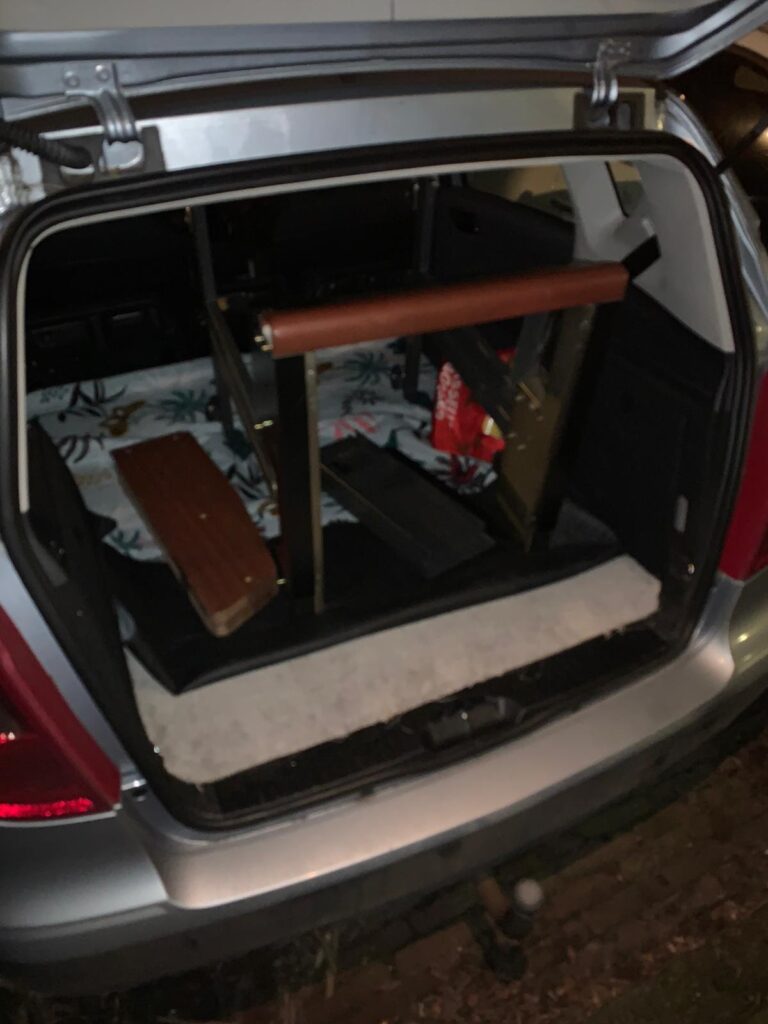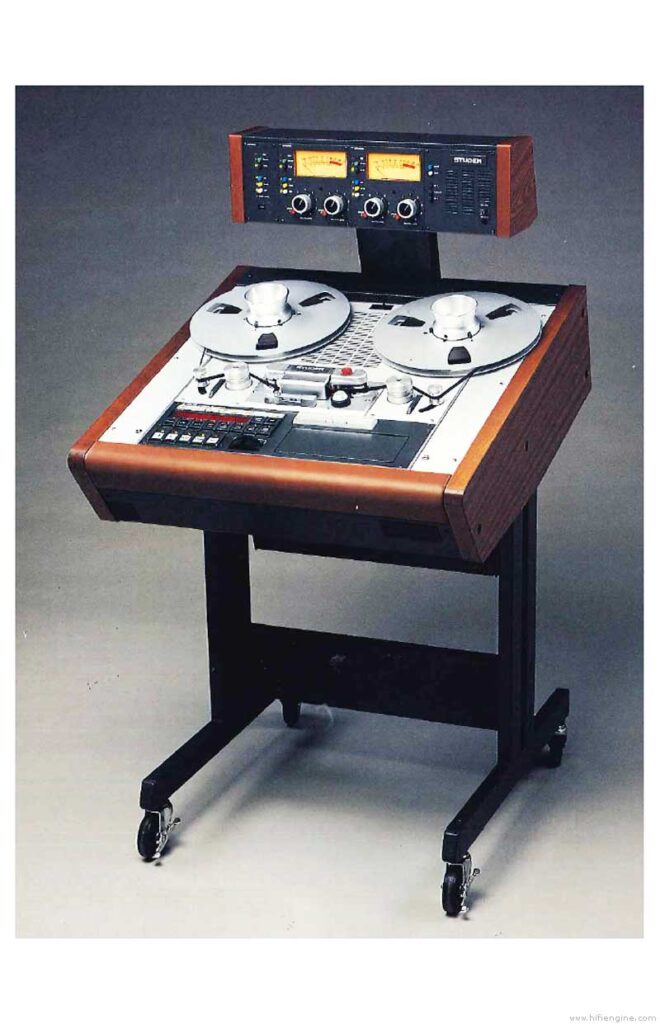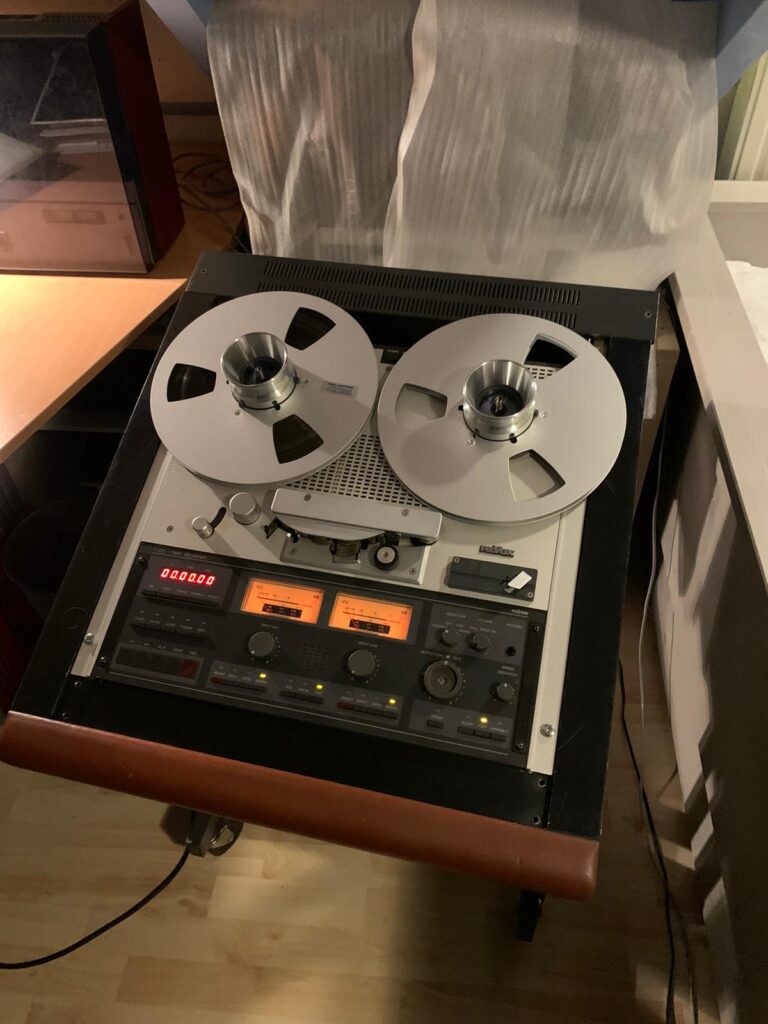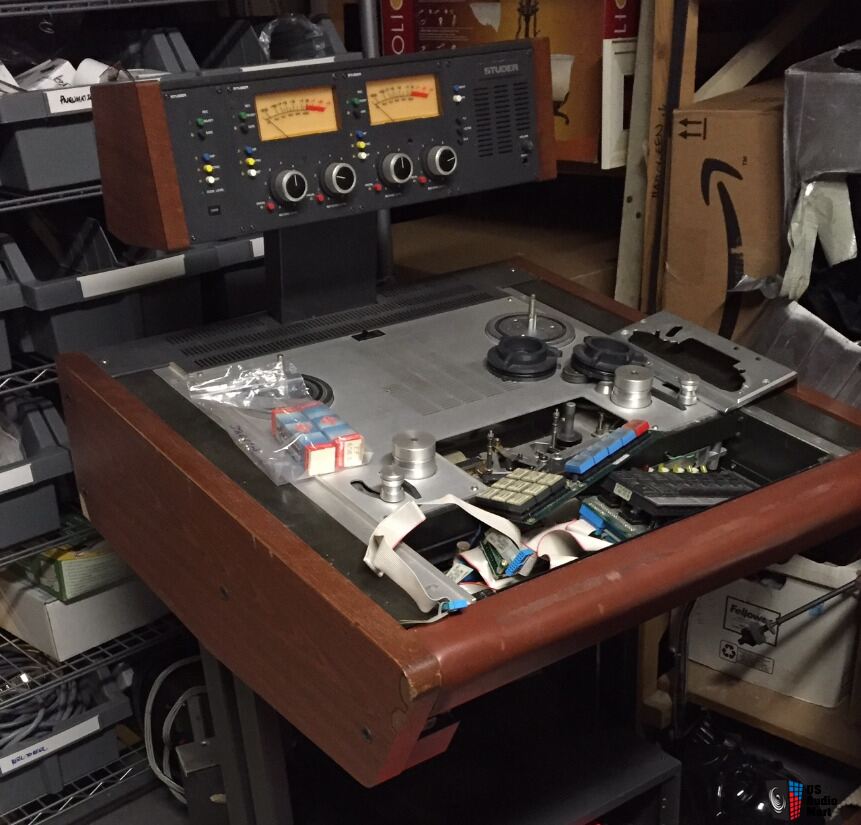I picked up a nice original Studer trolley to fit my C270 into. I had to wait around three months for it as it had to come all the way from Zagreb, Croatia. You can see it laying in my car below.

Now, an original trolley was never made for the C270, so the trolley was obviously built for a different model. But which one? I don’t think it’s the A807 as that one has wooden side pieces that are curved at the top, the back part (where the transport is) is slightly higher then the control section. A820 is way bigger so this leaves the A810 and A812. The A812’s trolley looks like the correct wooden side pieces but it has aluminium side strips with holes in them while this one has black side strips with no holes. See the next two pictures for a comparison, note that my trolley does not have the side panels fitted and obviously no meterbridge.


The casters with their locking arms are the exact same ones as the A812, and from dimensions the overal size seems to match A812, so I went on a furious googling spree, I just HAD to find an image of my trolley online somewhere. After looking for three days straight, I finally found one!!!

Now, this is a bit of a parts bucket, but you can clearly see that this is (was) an A812, mounted in the same type of trolley that I have. To me this is enough evidence to declare my trolley as an A812 trolley. I also looked for A810 trolleys but those are still the “older” style, being more square. Mine does not have the mount for a meter bridge so this would have been a “broadcast” version. See page 107 of the A812 mk2 operators manual, the tilting mechanism is the same as the studio version (not the economy trolley) but in the manual the side strips look to be aluminium and cover the rackmounts of the A812.
So, what is next? my wooden side panels are severly damaged. Replacing them with solid wood, Mahogony or something similar is an easy (although expensive) option but right now the trolley is fully original and I would like to keep it that way. I think I’m going to try to restore the original ones first.
